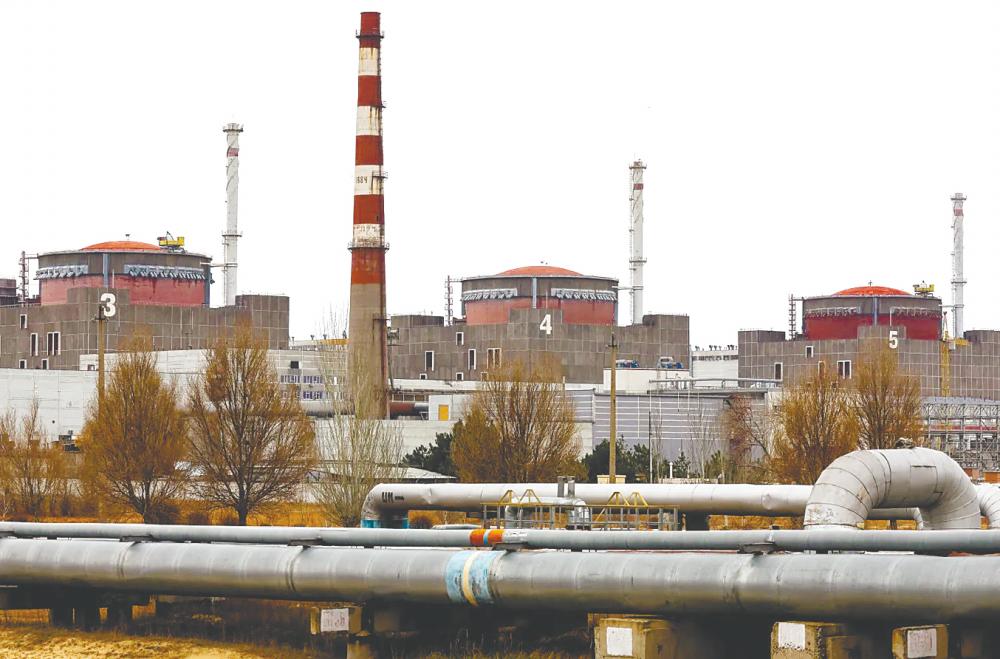OUR progress in combatting the global climate crisis has stagnated. This is not due to a lack of effort but because our technology for managing greenhouse gas emissions has not kept pace with the technology advancements in other resource-intensive fields.
The massive rise in artificial intelligence (AI) popularity has driven data centre demand to new heights. Experts estimate data centre storage could grow from 10.1 zettabytes (ZB) in 2023 to 21ZB in 2027, more than doubling in just five years.
Unfortunately, data centres require enormous amounts of energy to operate. According to Goldman Sachs Research (2024), the most popular generative AI, ChatGPT, requires almost 10 times the electricity to process a query compared to a Google search. Additionally, they estimate power demand will grow by 160% by 2030, with carbon dioxide emissions from data centres more than doubling from 2022 to 2030.
As Malaysia rapidly expands its data centres, their energy consumption has become a major concern. Research estimates that the potential electricity demand from data centres could exceed 5GW by 2035, putting an additional massive strain on our efforts to achieve net zero emission by 2050.
Thus, it is imperative for the government to accelerate the phasing out of fossil fuel power plants in favour of sustainable energy.
While nuclear power plants have been proven to be one of the safest forms of power, the major challenges for Malaysia in integrating nuclear power are the time and resources needed to study, operate, and maintain the plants. This is why small modular reactors (SMRs) could be helpful if we decide to integrate nuclear power into our energy mix.
SMRs are touted as smaller and safer nuclear reactors that are modular, meaning they are designed and built in a factory to be shipped out for installation. Thus, the initial cost of an SMR could be much less than that of a large-scale power plant. Not to mention that it is possible to repurpose coal-fired power plants with SMRs, removing the cost of identifying new sites and building new infrastructure.
However, the SMR is still relatively new. Even though nuclear power countries around the globe have invested a fair amount into it, only China and Russia have operational SMRs. China has found greater success with its 210MW HTR-PM, which entered commercial operation last December.
In addition to the success of the HTR-PM, China plans to upscale to a version that can generate up to 650MW with six reactor modules.
Meanwhile, Russia has begun preparatory work for its first on-land SMR (their first SMR, KLT-40S, was used in a floating nuclear power station), the RITM-200N, which can generate 55MW of electricity and will be commissioned in 2028 (World Nuclear News, 2024).
Russia has also signed a contract with Uzbekistan to build an SMR nuclear power plant with a total capacity of 330MW.
Russia has cooperated with many other countries to build their nuclear power plants, regardless of their scale, including the newest BRICS members, Egypt and Ethiopia.
Embracing nuclear power and cooperating with China and Russia would be advantageous given their experience in the field. On top of that, China and Russia are founding members of BRICS, an organisation Malaysia has expressed interest in and formally applied to join.
BRICS is more than just an organisation for economic and trade cooperation, it also places a great emphasis on collaborative efforts to combat climate change. BRICS regard nuclear power as a sustainable energy source that can help address climate change.
The strategy for economic partnership within BRICS includes sustainable development as a critical dimension and pledges to ensure the full and effective implementation of the United Nations Framework Convention on Climate Change and the Paris Agreement.
To achieve these targets, BRICS launched the BRICS Environmentally Sound Technology (BEST) Platform in 2015, aiming to facilitate the accumulation and exchange of experience and information in sustainable technology.
Thus, it would be the perfect platform for us to foster collaboration with any BRICS member states, not just China and Russia, which are actively developing SMRs. For example, India also plans to develop SMRs to fulfil its clean energy transition goals.
The avenues for cooperation within BRICS include the BEST platform and the New Development Bank (NDB).
The NDB is a multilateral development bank established by the five founding members of BRICS to mobilise resources for infrastructure and sustainable development projects, not limited to BRICS members.
The NDB’s cooperation mechanism includes financing and technical assistance, which we desperately need and which addresses most of the challenges we face.
If Malaysia collaborates with BRICS members on this matter, it would significantly enhance our ability to tap into the power of nuclear energy, with the potential to build our own nuclear reactor in the future.
While SMRs certainly have the potential to provide consistent sustainable energy, experts have yet to reach a consensus on their economic viability.
A common concern is their lack of economies of scale, making larger reactors more attractive despite their high initial cost.
Essentially, SMRs are not meant to replace large nuclear reactors but to complement them for commercial use. With the right SMR nuclear power plant, the increasing power demand from data centres can be quenched without putting too much strain on our environment and climate.
However, we would eventually need to integrate large reactors to fully replace fossil fuel power plants.
This process would be costly and could take over a decade or two if done alone but cooperation with BRICS can expedite it. With experience in handling SMRs, the transition to large nuclear reactors would be smoother than starting from scratch.
The writer is a research assistant at Emir Research, an independent think tank focused on strategic policy recommendations based on rigorous research. Comments:letters@thesundaily.com









